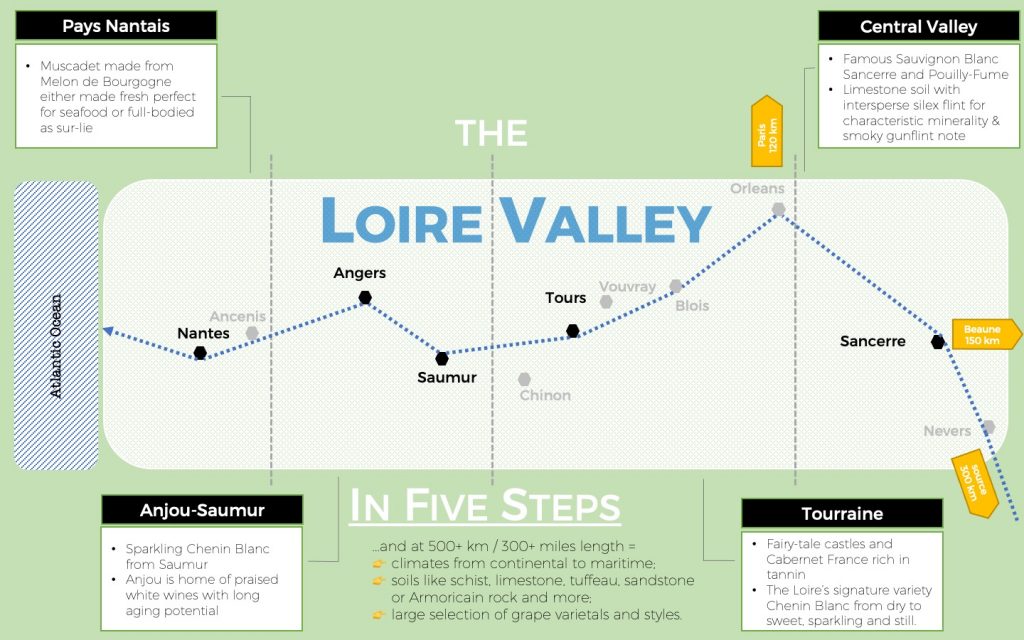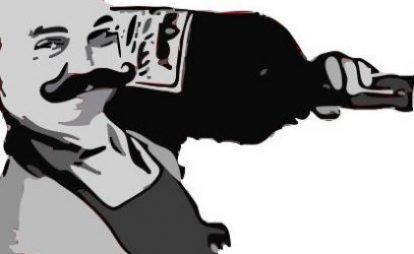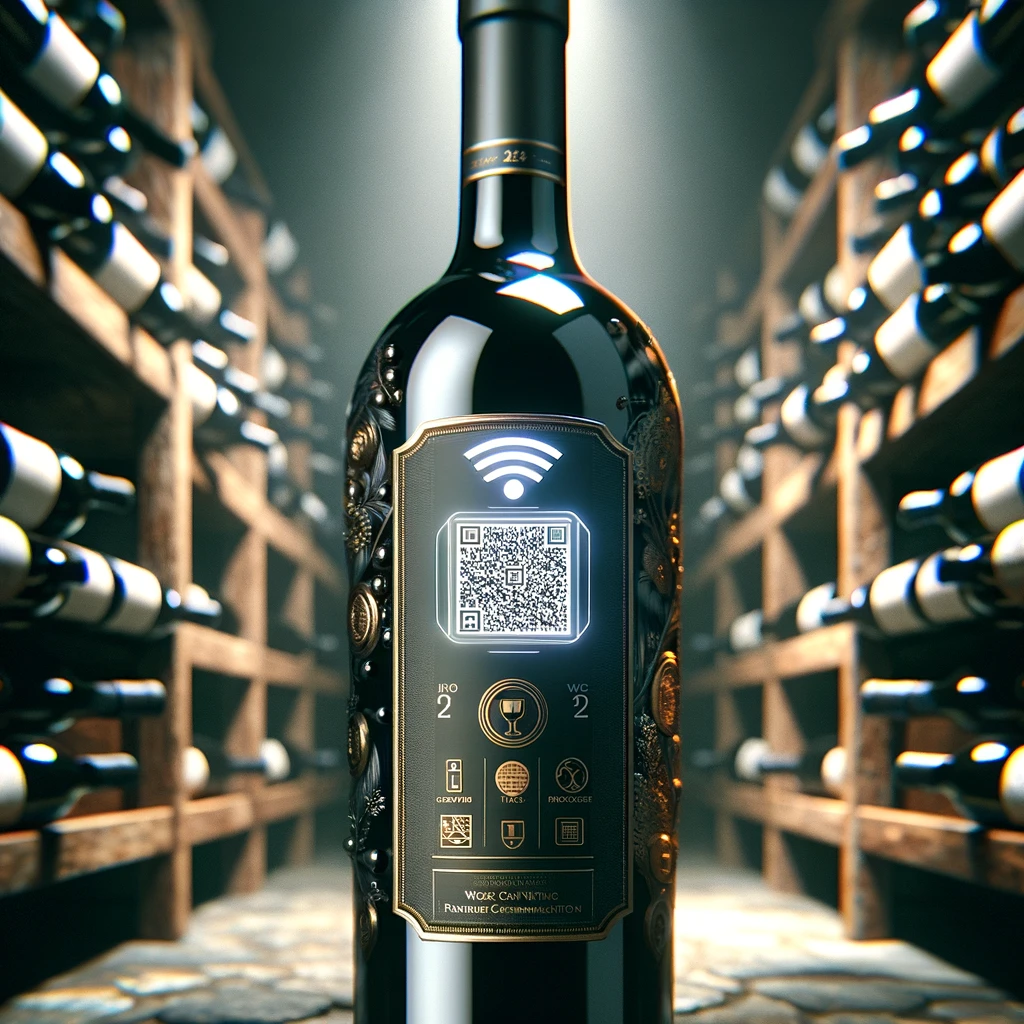The Loire valley wine region is one of the most diverse wine regions of the world. Here is a cheat sheet for what you must know.
Two dozen varietals and all the soil types you can think of
When I first trained to become a sommelier, I struggled to keep all the information about the immense wine producing region that is the Loire Valley in my little head. We are talking about the longest river in France at more than 1000 kilometers (or 620+ miles) and though we only talk about the northern part in terms of wine production, it is a lot of ground to cover.
The key facts
Given that we are talking about 500 km worth of wine production between Sancerre and Nantes, we obviously have very different climates and very different soils with many different grape varieties and, of course, all styles you could think of:
- The climate ranges from continental in the east with cold winters and hot summers to maritime climate with relatively mild summers and winters that aren’t too cold, so in general you don’t get extreme temperatures, but a nice salty breeze from the sea.
- France is known for the impact of its soils on the terroir and the character of its wines. The Loire Valley is all that on a smaller scale but the full range of soils from schist to limestone to tuffeau, sandstone or Armoricain rock and more along the way of the river.
- With such a distance to cover, the differences in climate and soil that comes with it, the Loire Valley is also home to a wide selection of two dozen grape varietals like Chenin Blanc, Melon de Bourgogne, Sauvignon Blanc, Folle Blanche, Chardonnay, Chasselas, Romorantin Sauvignon Gris and Tressalier for whites, and Cabernet Franc, Grolleau, Cabernet Sauvignon, Gamay, Pinot Noir, Pineau d’Aunis, Côt and Négrette for red wine. And then there are the different styles, too, with still or sparkling wine and dry to sweet, wine made for direct consumption or sold as Vins de primeur or Nouveaux (like its famous cousin from Beaujoulais) to those that benefit from long bottle aging.
You get the gist? When it comes to the Loire there is a lot to know and learn, but just to give you the basics, here is a cheat sheet with some key information about its main production areas and wines with more info below:

The Loire Valley in 5 quick steps – To download the infographic, click on the following link: Loire Basics Infographic
Central Valley
Sancerre and Pouilly-Fume are famous for its white wines from Sauvignon Blanc. Grown on limestone soil with intersperse silex flint that gives it its characteristic minerality and sometimes a smoky gunflint note. Cold continental winters and hot summers.
Tourraine
Known for its fairytale castles, Cabernet Franc produces fresh red wines rich in tannins that benefit from bottle aging.
Vouvray produces almost exclusively Chenin Blanc, the Loire’s signature variety and that comes in all shapes from dry to sweet, sparkling and still white wines.
Anjou-Saumur
Samur is known for its sparkling wines made from Chenin Blanc, while Savennières in Anjou is home to some of the most praised white wines in France with a long aging potential. The renowned Rosé d’Anjou is made from Grolleau.
Pays Nantais
At the western end of the Loire where it flows into the Atlantic Ocean, you’ll find the Pays Nantais, the region surrounding the city of Nantes, where they make Muscadet, one of the world’s best wine for seafood. Regular Muscadet is relatively neutral but fresh, while Muscadet sur lie is more full-bodied as it left over the winter on its lees and cannot be bottled before March. The wine is made for the Melon de Bourgogne grape, which originates in Burgundy as the name indicates but is almost exclusively grown in the Loire Valley.
This is it in a nutshell, but for sake of completeness…
Saint-Pourçain, Côtes Roannaises, and Auvergne
Following down the river past Nevers, there are a couple of additional regions you could cover as though they might be less known, are officially part of the Loire Valley and technically of the Central Valley, but they are closer to the Massif Central of France. The AOP Saint-Pourçain and AOP of Cotes d’Auvergne are actually situated on the Loire’s tributary Allier, the river that gives the département of Allier its name, and the AOP Côte Roannaise by the city of Roanne, which is only 70 km north-west of Lyon. And since a river this long and with such a rich geological history has several affluent that feed the Loire, the region has several more sub-zones that contribute to the total of 87 appellations under the AOC, VDQS and Vin de Pays systems.
Lastly, if you want to know more – and there is a lot more to know about wine and the Loire Valley, check out its official website that consists of gems like this video about the lifecycle of the vine in the Loire Valley:



